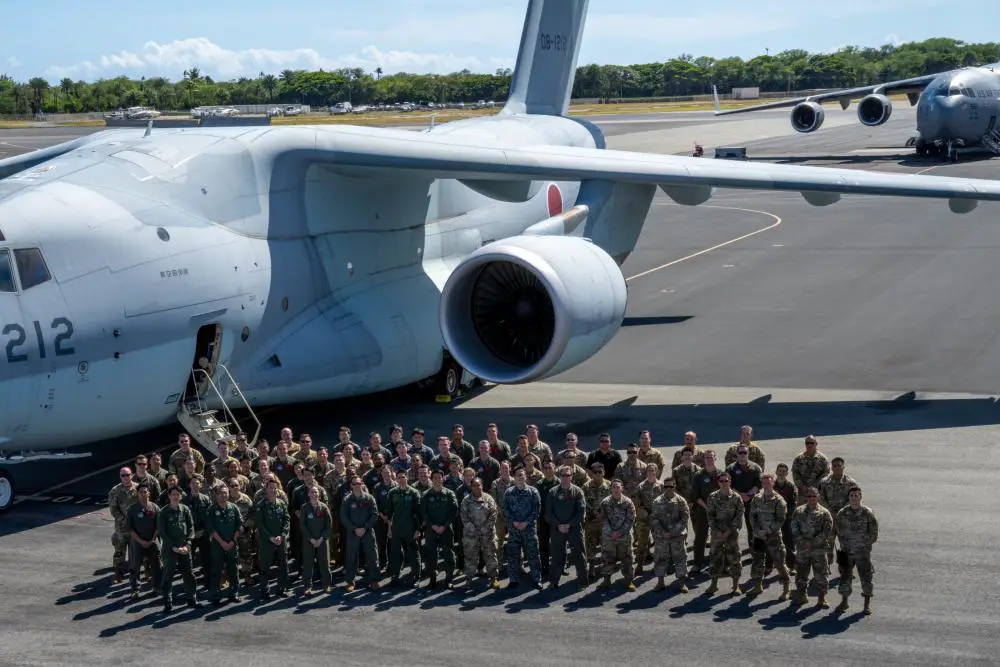Japan Air Self-Defense Force (Koku-Jieitai, JASDF) Airmen spent three days training alongside 15th Wing Airmen, strengthening partnerships and familiarizing both forces with the Kawasaki C-2 and C-17 Globemaster III. This was the first bilateral training exercise between the 535th Airlift Squadron and the JASDF (K-J) 403rd Tactical Airlift Squadron with the main objective of flying in a formation and completing an airdrop mission. The two squadrons flew orientation sorties to familiarize aircrews from each force on the capabilities of both aircraft and the different processes of each crew. The joint training increased operational concepts and capabilities and advanced communication, transparency, and shared values and interests, strengthening partnerships for future situations.

“This is the first ever exercise of a C-17 and JASDF (K-J) C-2 aircraft. It is symbolic for us to fly together in the same sky at the same time, as it not only strengthens our alliance, but also improves interoperability,” said JASDF Lt. Col. Motofumi Suzuki, 403rd Tactical Airlift Squadron commander.
“Robust bilateral relationships like that of the U.S. and Japan are essential to cultivating our ability to support each other across the Indo-Pacific,” said U.S. Air Force Col. Keith Young, 15th Wing vice commander. “This has been a great opportunity for the 15th Wing team to share our capabilities, strengthen partnerships and advance joint interoperability.”

The Kawasaki C-2 is a mid-size, twin-turbofan engine, long range, high speed military transport aircraft developed and manufactured by Kawasaki Aerospace Company. In June 2016, the C-2 formally entered service with the Japan Air Self-Defense Force (JASDF). The Kawasaki C-2 can carry payloads up to four times heavier, such as MIM-104 Patriot surface-to-air missile batteries and Mitsubishi H-60 helicopters, and possesses six times the range. While sharing fuselage components with the Kawasaki P-1, the fuselage of the C-2’s is substantially larger to accommodate a vast internal cargo deck, which is furnished with an automated loading/unloading system to reduce workloads on personnel and ground equipment.The C-2 is equipped with a full glass cockpit, fly-by-wire flight controls, a high-precision navigation system, and self protection systems.

The McDonnell Douglas/Boeing C-17 Globemaster III is a large military transport aircraft that was developed for the United States Air Force (USAF) from the 1980s to the early 1990s by McDonnell Douglas. The C-17 carries forward the name of two previous piston-engined military cargo aircraft, the Douglas C-74 Globemaster and the Douglas C-124 Globemaster II. The C-17 commonly performs tactical and strategic airlift missions, transporting troops and cargo throughout the world; additional roles include medical evacuation and airdrop duties. The C-17 is designed to operate from runways as short as 3,500 ft (1,100 m) and as narrow as 90 ft (27 m). The C-17 can also operate from unpaved, unimproved runways. The thrust reversers can be used to move the aircraft backwards and reverse direction on narrow taxiways using a three- (or more) point turn.
















